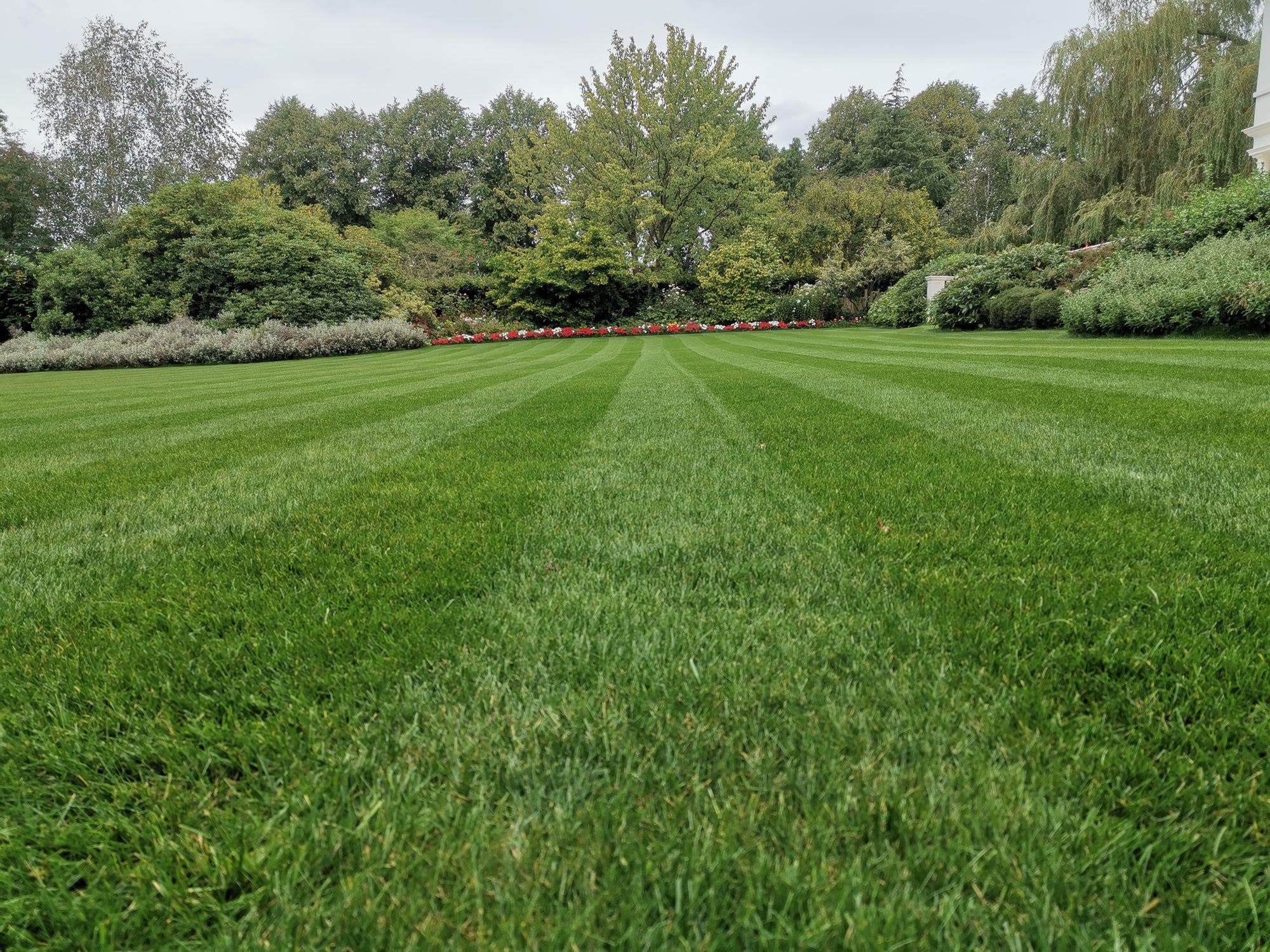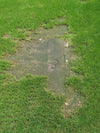
The Benefits of Fertilising Your Lawn
In order to stay fit, strong, and healthy, we feed our body the nutrients it needs to thrive. The same should apply if we want to own a beautiful, resilient, and healthy lawn. Feeding your lawn is important, but it does not need to be a complicated affair. In this blog, we take a closer look at why and how you should fertilise your lawn.
Why Fertilising Your Lawn Is Important
To keep your lawn healthy and in tip top condition, a steady supply of quality nutrients at the right times is a must. Without this supply the grass will not perform, regrowth will be slow, and the root system will be weakened, making your grass more prone to ill health and disease. But what does fertiliser do?
Replenishing Nutrients
Long periods of extreme weather can rapidly deplete your lawn of vital nutrients. Heavy rainfall, as is common in the UK, is particularly damaging to your soil as it washes away nutrients, leaving you with a weakened lawn and the ideal conditions for diseases such as fusarium patch to flourish. Lawn feed is derived from a combination of water, carbon dioxide, and chemicals that replenish the soil with the nutrients your lawn needs to thrive throughout the seasons.
Additionally, every time you mow your lawn, you remove vital moisture and nutrients that are stored in the blades of the grass. Busy, hectic lives often mean that you allow your grass to grow long then cut it short, which means you are removing a considerable amount of those nutrients stored in the blades in one go. Regular mowing allows your grass more ability to replenish, but you will still need to replace those nutrients in order to keep your lawn healthy and growing strong.
Encouraging Growth
Over time, low nutrient content in your soil and the constant stress of mowing can weaken your lawn, slowing its growth, and making it thin and sparse. When growth is slow, bald patches may appear, creating the perfect space and environment for weeds and diseases to take hold. Fertiliser helps your lawn stay strong and healthy throughout the year, preventing thinning, bald patches, and disease.
What nutrients does your lawn need to thrive?
Soils often lack some of the nutrients your lawn needs to thrive, but fertilisers provide the building blocks required for a healthy lawn. The three most important components for a healthy lawn are Nitrogen (N), Phosphorus (P), and Potassium (K); your lawn needs these in order to complete photosynthesis.
- Nitrogen (N) is responsible for helping the plants to grow quickly, it is also a component of chlorophyll which is essential if the plants are to develop the desired lush green colour.
- Phosphorus (P) helps plants to withstand stress, and transforms sunlight into chemical energy, which is key for plant development, and for promoting healthy and strong roots.
- Potassium (K) promotes growth and vigour, helping the plants to resist disease by keeping their metabolic functions running smoothly.
Alongside these 3 macronutrients, your lawn feed should also contain a wealth of micronutrients, including Sulphur (S) and Iron (FE).
When and how often should you fertilise your lawn?
To maintain a healthy lawn, you’ll want to fertilise it throughout the year, to supplement for the things that your lawn may be missing due to the varying environmental conditions.
Spring and Summer
As the grass grows quickly through the spring and summer months, you will need to feed your lawn with a higher dose of Nitrogen and Potassium than at other periods of the year, along with some Phosphate.
Autumn and Winter
In the autumn and winter we want to concentrate on strengthening the roots of the grass.While a lower amount of Nitrogen is required, we’ll want to use a higher dose of Potassium to strengthen the root and prepare it for the potentially harsh weather ahead.
It is important to apply a feed that is tailored to the season, as your lawn’s needs change through the year and applying the wrong nutrients may cause stress to the grass that will eventually weaken it, making it more prone to disease. The So & Mo Feeding Plan is designed to cater to your lawn across the year.
Can I Put Too Much Fertiliser on My Lawn?
Yes, you can put too much fertiliser on your lawn. Although fertiliser helps your lawn thrive, when used in excess it can create imbalances that are detrimental to the grass. ‘Fertiliser burn’ happens when Nitrogen and salt build up, drying the soil and damaging the grass. Depending on the extent of the damage, fertiliser burn can be redeemed by watering the grass abundantly, but in some occasions it may kill the plant altogether.
You can avoid fertiliser damage by using the right amount of fertiliser for the size of your lawn, using the correct nutrients for the season, and making sure that you distribute your fertiliser uniformly across the lawn.
Lawn Care With So & Mo
For a beautiful, thriving lawn, it is important to feed your lawn regularly, at the right time, without missing important feeds. A missed feed can mean lots of extra work to bring your lawn back to good health, just as our own health will suffer if we don’t provide our body with the essential nutrients and building blocks required for optimal health.
The So & Mo Performance Liquid Lawn Feed Plan consists of 6 feeds over 12 months. Each feed is engineered to provide your lawn with the right nutrients for the season, in order to ensure performance all year round. The liquid formulation makes it easier to spread evenly, and we can advise you on how much feed you need based on the side of your lawn, so you can be sure that your lawn is getting exactly what it needs. So why not order your Performance Liquid Lawn Feed today?Ready to be proud of your garden?
Ensure your lawn never goes hungry with our personalised feeding plan. Delivered through you letterbox exactly when you need it.





